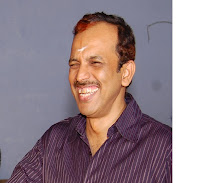I recently read an old book, ' History of Ancient India' by R K Majumdar and R N Srivastava.
In page 118, there is a mention of mantra probably from one of the brahmanas of Rigveda
karuraham tatobhi shagupal prakshini nanA |
nAnAdiyO vasooyavO (a) mugAyiva tasthi mendrAyandO parisrava ||
"I am a poet, my father is a physician and my mother grinds corn on stone. Being engaged in different occupations, we seek wealth and happiness as cows seek food in different pastures"
This shows the utter lack of class consciousness in Rigvedic period.
Now let us take up the Purusha sooktam. Translation to the mantra of Purusha Suktam (RV 10.8.90) mantra 13
ब्राह्मणोस्य मुखमासीद बाहूराजन्य : कृत : |
ऊरू तदस्य यद्वैस्यो पद्भ्यां शूद्रो अजायत ||
brahmano(a) sya mukhamaseed, bahoo rAjanya: kruta:|
uru tadasya yadvaisyo padbhyo sudro ajAyata||
The brahmin became the head of the Purusha. The Kashatriya became its arms. The Vaisya its torso and the sudra its legs.
The standard interpretation is that of the brahman 'becoming' the head of the Purusha (not 'springing up from' as given by European mischief indologists). The previous mantra 12 in purusha suktam says
" when the Purusha was sacrificed( vyadadhu:) , into what forms he was made ? What became of His head ? What became of his face ? What is said of His Arms ? What are said of His Thighs and feet ?"
So the verse 13, is a continuation of the 'what became of ' line of enquiry .
The mantra 13 (which is being used by anti Hindus and all and sundry to denigrate the Varna system) is in fact a straightforward hymn on the nature of classification of people on naturally existing principles.
As regards the Gita: Krishna says in Chapter 4, sloka 13,
chAturvarnyam mayA srushtam guna karma vibhAgasha: |
The four characteristics which classify people based on character (attitude) and Action are created by me.
This is the correct meaning. Krishna says here 'varnyam' (characteristics) and not 'varnam' (classification). Look at the missing 'y'
And lastly I come to the Jati। This is the achilles' heel of our country in general and our religion in particular. You will be surprised to learn that the Jati classification was made during the 3 rd to 10 th century when Buddhism died out and the returnees made out sects for themselves in Hinduism. But here again, the Jati is different from 'caste' as coined by the British.
Thursday, July 16, 2009
Subscribe to:
Post Comments (Atom)

2 comments:
Dear Venkat ji,
I am looking at some old posts as I have only recently come across this blog. Interesting to read.
I also feel that varna system was not meant to discriminate but to provide a kind of structutre to the societ and assign roles and resposnsibilities so that each 'class' of workers can do their duty as efficiently.
I will also quote two examples here:
1. If caste system was so rigid then why was did ram as Kshatriya kill Ravana a Brahmin. This showed that though birth is important, deeds during lifetime are more important.
2. As of now almost the entire globe follows the caste system. Imagine - why are directors and managers in a company paid more than workers and differentiating between workers as well, entitling some people to more luxuries? Isn't this also a discrimination.
3. Yes, there are some ugly forms of caste system seen in certain parts of the country but that cannot be blamed to system formalised in ancient system just as we cannot blame racial and colour discriminations in some parts of the worl to religion being practiced in those parts of the world
Just some thoughts....
Vineet Bhatia
Nice post Venkat...It is an interesting point on the Jati system being present post Budhist period.Can you post more information on that.
Regards
Karthik PK
Post a Comment